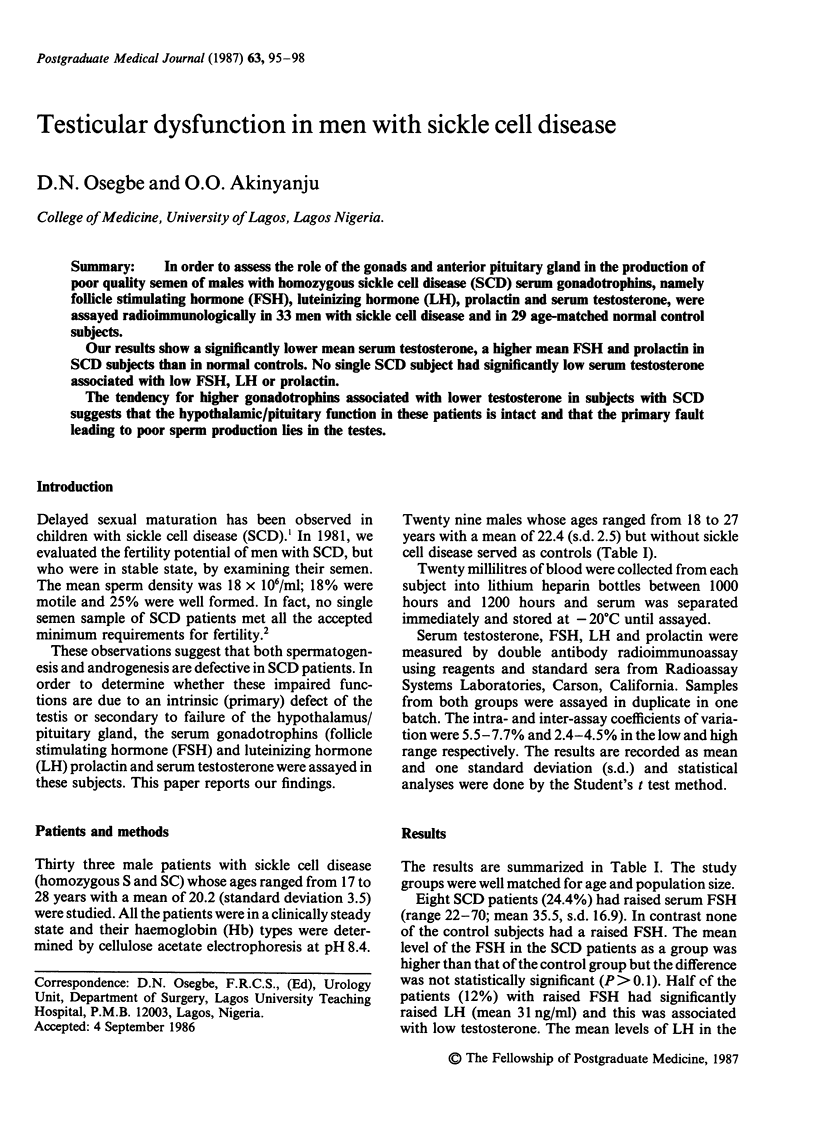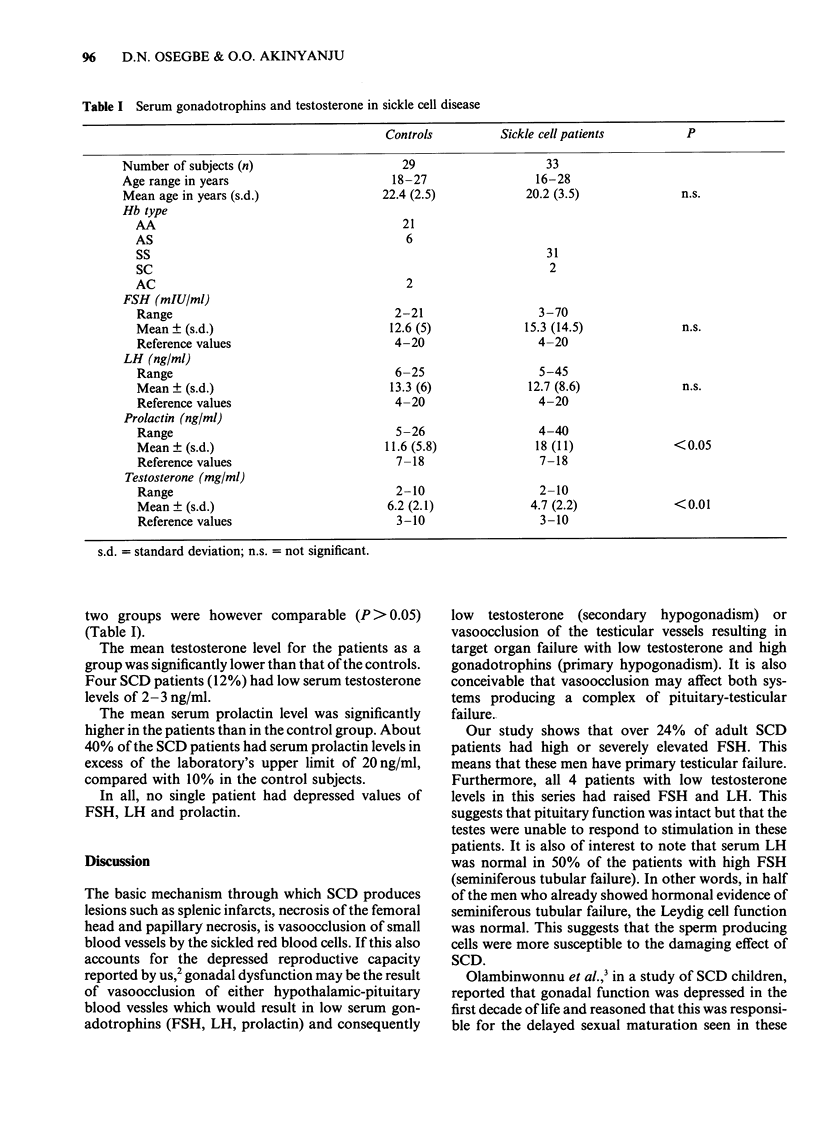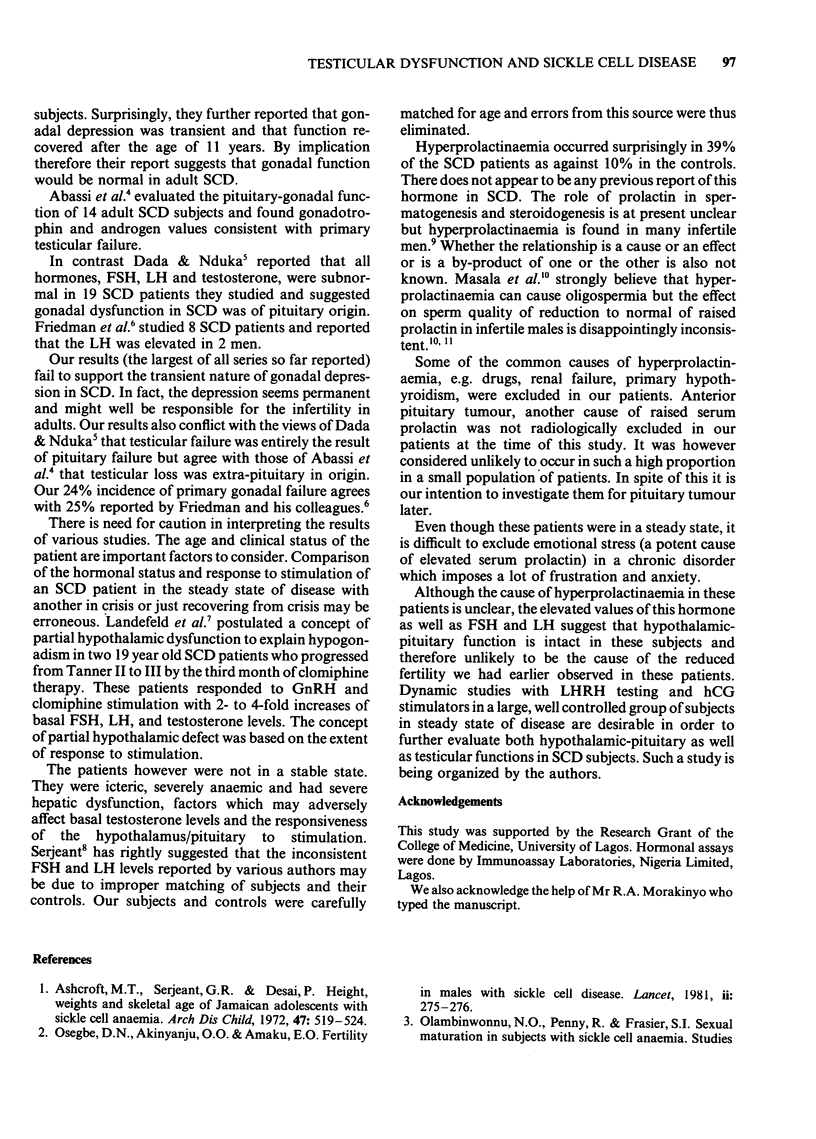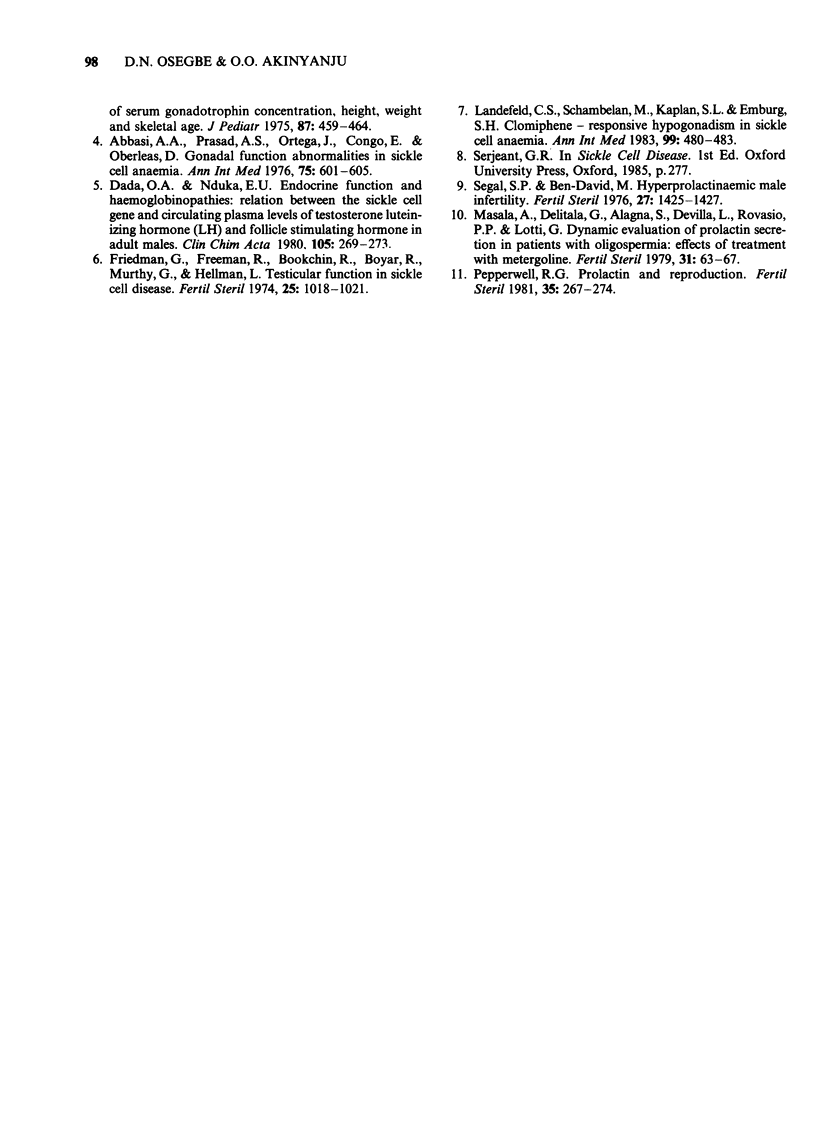Abstract
In order to assess the role of the gonads and anterior pituitary gland in the production of poor quality semen of males with homozygous sickle cell disease (SCD) serum gonadotrophins, namely follicle stimulating hormone (FSH), luteinizing hormone (LH), prolactin and serum testosterone, were assayed radioimmunologically in 33 men with sickle cell disease and in 29 age-matched normal control subjects. Our results show a significantly lower mean serum testosterone, a higher mean FSH and prolactin in SCD subjects than in normal controls. No single SCD subject had significantly low serum testosterone associated with low FSH, LH or prolactin. The tendency for higher gonadotrophins associated with lower testosterone in subjects with SCD suggests that the hypothalamic/pituitary function in these patients is intact and that the primary fault leading to poor sperm production lies in the testes.
Full text
PDF



Selected References
These references are in PubMed. This may not be the complete list of references from this article.
- Abbasi A. A., Prasad A. S., Ortega J., Congco E., Oberleas D. Gonadal function abnormalities in sickle cell anemia. Studies in adult male patients. Ann Intern Med. 1976 Nov;85(5):601–605. doi: 10.7326/0003-4819-85-5-601. [DOI] [PubMed] [Google Scholar]
- Ashcroft M. T., Serjeant G. R., Desai P. Heights, weights, and skeletal age of Jamaican adolescents with sickle cell anaemia. Arch Dis Child. 1972 Aug;47(254):519–524. doi: 10.1136/adc.47.254.519. [DOI] [PMC free article] [PubMed] [Google Scholar]
- Dada O. A., Nduka E. U. Endocrine function and haemoglobinopathies: relation between the sickle cell gene and circulating plasma levels of testosterone, luteinising hormone (LH) and follicle stimulating hormone (FSH) in adult males. Clin Chim Acta. 1980 Aug 4;105(2):269–273. doi: 10.1016/0009-8981(80)90469-6. [DOI] [PubMed] [Google Scholar]
- Friedman G., Freeman R., Bookchin R., Boyar R., Murthy G., Hellman L. Testicular function in sickle cell disease. Fertil Steril. 1974 Dec;25(12):1018–1021. doi: 10.1016/s0015-0282(16)40809-5. [DOI] [PubMed] [Google Scholar]
- Landefeld C. S., Schambelan M., Kaplan S. L., Embury S. H. Clomiphene-responsive hypogonadism in sickle cell anemia. Ann Intern Med. 1983 Oct;99(4):480–483. doi: 10.7326/0003-4819-99-4-480. [DOI] [PubMed] [Google Scholar]
- Masala A., Delitala G., Alagna S., Devilla L., Rovasio P. P., Lotti G. Dynamic evaluation of prolactin secretion in patients with oligospermia: effects of treatment with metergoline. Fertil Steril. 1979 Jan;31(1):63–67. doi: 10.1016/s0015-0282(16)43762-3. [DOI] [PubMed] [Google Scholar]
- Osegbe D. N., Akinyanju O., Amaku E. O. Fertility in males with sickle cell disease. Lancet. 1981 Aug 8;2(8241):275–276. doi: 10.1016/s0140-6736(81)90525-0. [DOI] [PubMed] [Google Scholar]
- Segal S., Polishuk W. Z., Ben-David M. Hyperprolactinemic male infertility. Fertil Steril. 1976 Dec;27(12):1425–1427. doi: 10.1016/s0015-0282(16)42259-4. [DOI] [PubMed] [Google Scholar]


